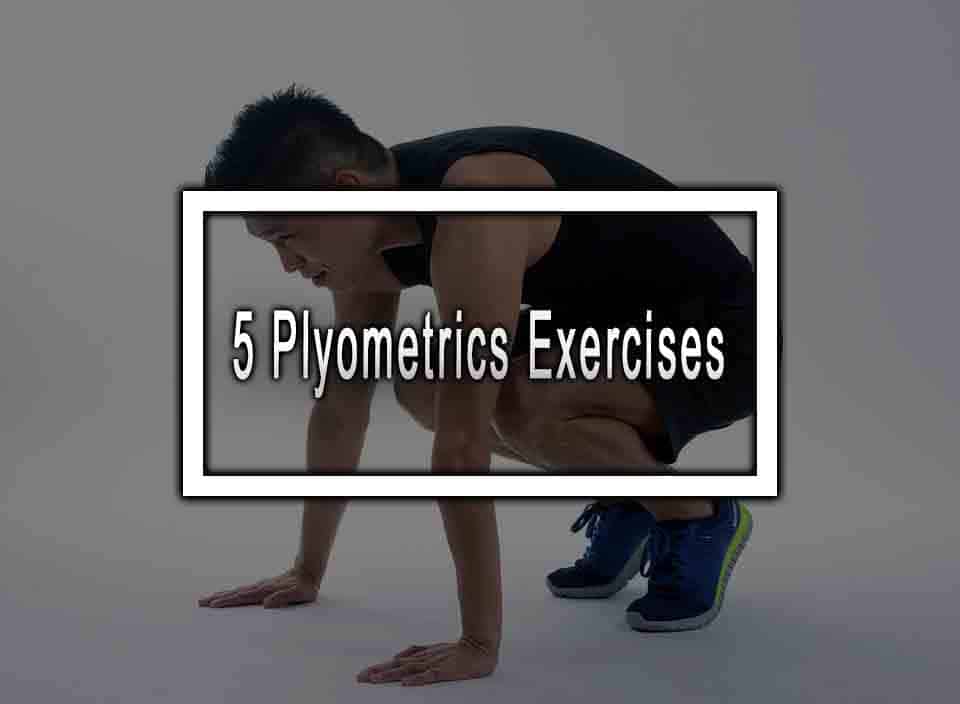Plyometrics exercises have been gaining popularity over the years, particularly in the fitness world. Sports professionals and athletes have been using plyometrics exercises for decades as a part of their training routine, but the general public is now starting to appreciate its effectiveness in achieving a fit, toned, and strong body. The word “plyometric” means “measuring distance,” and the exercises are meant to enhance the explosive power of various muscles in the body. Whether you are a seasoned athlete or a beginner, plyometrics exercises can help you meet your fitness goals. In this article, we will discuss what plyometrics exercises are, their benefits, and how to add them to your workout.
What are Plyometrics Exercises?
Plyometrics exercises are a form of training that involves rapid and explosive movements, often jumping or hopping, to enhance power and develop strength. These exercises typically focus on the lower body, but there are also upper-body plyometric exercises. The idea behind plyometrics exercises is to increase the amount of force muscles can produce in a short period.
Plyometrics exercises are often used in sports that demand sudden speed, power, and explosiveness, such as basketball, football, and volleyball. The primary goal of plyometrics exercises is to build explosiveness in the body, not necessarily endurance or strength. However, plyometrics can supplement a traditional strength training routine quite nicely by adding a new dimension of power, speed, and strength.
Adding Plyometrics Exercises To Your Workout
Before you start adding plyometrics exercises to your workout, you need to make sure you are in good physical condition and injury-free. Plyometric exercises require excellent balance and stability, which can be disrupted if you have weak or unstable muscles. Start your plyometric exercises gradually and increase intensity, duration, and frequency as your body adapts.
Here are some of the plyometric exercises you can add to your workout
Jump Squats
Stand with your feet shoulder-width apart and squat to a deep position, then, explode upwards, jumping as high as possible. Land softly and repeat for the desired amount of repetitions.
Plyometric Push-Ups
Start in the traditional push-up position. Lower your body to the ground and then explosively push your upper body off the ground and clap your hands before landing in the start position. Repeat for the desired amount of repetitions.
Lunge Jumps
Standing in a lunge position, jump up, switch legs, and land in a lunge position on the opposite side. Repeat for the desired number of repetitions.
Box Jumps
Stand in front of a sturdy box or bench. Explosively jump upwards and land on top of the box, then, step down and repeat. Make sure the box is stable and the height is appropriate for your fitness level.
Medicine Ball Throws
Stand with your feet hip-width apart, hold a medicine ball above your head, and throw it downward, slamming it into the ground as hard as possible. Catch the ball on the bounce and repeat for the desired amount of repetitions.
Benefits of Plyometrics Exercises
Increases Speed and Explosiveness
Plyometric exercises are designed to increase the explosive power of your muscles by making them contract more rapidly and forcefully. This results in faster movements and better reactions to sudden physical demands, making you faster and more explosive.
Builds Strength
While plyometrics are used predominantly for explosiveness training, they also improve overall strength. Plyometric exercises work the fast-twitch muscle fibers that are responsible for producing quick, explosive movements, and also recruit the slow-twitch muscle fibers which are responsible for endurance.
Improves Jumping Ability
The explosive movements that plyometric exercises require can help enhance your vertical jump by building strength in the muscles responsible for such movements. This is especially helpful for sports like basketball, volleyball, or track and field.
Enhances Balance and Coordination
Plyometrics exercises require a lot of balance and coordination to execute effectively, hence training with plyometrics exercises can lead to better stability and coordination in other athletic endeavors.
Can Help Burn Fat
Plyometrics are high-intensity and explosive exercises. This means they demand a lot of energy from your body and can help burn fat more effectively than steady-state endurance training.
Conclusion
Plyometrics exercises are an effective and fun way to add explosiveness, speed, strength, and coordination to your fitness routine. Incorporating plyometric exercises into your workout can be extremely beneficial, especially if you play high-intensity sports that require sudden movements and explosive power. Start slow and work your way up to more challenging exercises, and always make sure to train in a safe environment. With time and discipline, you can enjoy the benefits of a stronger, more balanced, and athletic body thanks to plyometrics exercises.
Plyometrics Exercises FAQ
Here are the most common questions about plyometrics exercises.
Who should do plyometric exercises?
Plyometric exercises are recommended for athletes and advanced fitness enthusiasts who have a solid base of fitness and strength.
Are plyometric exercises safe?
Plyometric exercises can be safe if performed correctly and under the guidance of a qualified trainer or coach. It is important to use proper technique, start with low-intensity exercises, and progress gradually to avoid injury.
What equipment is needed for plyometric exercises?
Plyometric exercises require minimal equipment. Some of the most common equipment used in plyometric training include medicine balls, resistance bands, plyo boxes, and cones.
How often should I do plyometric exercises?
Plyometric exercises should be incorporated into your overall fitness program, and your frequency should depend on your fitness level and training goals. Typically, plyometric exercises are performed 1-3 times per week.
More like this: 5 Circuit Training Exercises












